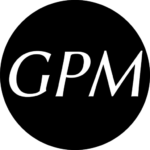Chiasmus can create connections and reversals.
At its most basic level, chiasmus is about relationships. Chiasmus’s ability to organize relationships can take place at the largest and smallest units of meaning, and as the previous section illustrates, the nature of those relationships may be described through a variety of metaphors extending beyond the traditional X. Most of chiasmus’s metaphors, however, highlight its capacity to connect and reverse in some form or another.

Chiasmus as bridge
In order for there to be a crossing, there must be two bodies or streams of meaning, which meet at the crossing point. This connecting relationship need not be represented as oppositional, as traditional X metaphor of chiasmus tends to suggest. A crossing point can be framed as an access point, where two distinct or approaches overlap, as is the case in a literal bridge. Foot and motor traffic are allowed to proceed above while water vessels and aquatic animals can pass by below. Bridge chiasmi are figures where readers are invited to consider something from multiple directions:
Injustice anywhere is a threat to justice everywhere.
(King)
A multimodal example is captions on an image or television, where two communicative modes overlap and create multiple channels of access without precisely replicating each other.

We might also think of chiasmus’s tendency to connect as a resonance or association rather than a direct overlap: the rhetorical force that holds two terms or ideas in tension with each other. This kind of chiasmus maintains a gap, a leap audiences must make between the two chiastic poles, but the relationship is still organized according to a deliberate, if occasionally mysterious logic. Rather than a bridge, this chiasmus perhaps more closely resembles atomic bonds, which Carpenter (2009) has used as a metaphor describe hybridity in electronic genres:
When two elements join, their atoms lose their individual properties and take on properties different from the elements that comprise the bond. Sodium chloride is no longer sodium or chlorine, but neither can it be accurately described as sodium + chlorine, which would be, one supposes, something of a noxious flame (sodium will produce a flame if it encounters water, and chlorine is a poisonous gas). Instead, sodium chloride is, of course, table salt. From two, one—something different, new, and tasty.
(p. 144)

A similar metaphor is the orbits of planetary bodies. When one planet brushes another’s gravitational field, both exert invisible influence on each other without touching. While planetary orbits follow organized laws of nature, it can sometimes be difficult to predict the consequences new gravitational interactions will produce. Cosmic contacts can over time stabilize into highly predictable orbits or lead to dramatic collisions where entirely new celestial bodies and relationships are created.

Chiasmus as mirror

Chiasmus has often traditionally been employed to make a turn of phrase “double back on itself” and invert an idea:
You must eat to live, not live to eat.
(Socrates)
This rhetorical sleight of hand is powerful because it presents an opposing viewpoint on the terms of the argument the rhetor wants to bolster (by literally mirroring its words and grammar). It is a sneaky way to argue one side of an issue because the mirror image of the form suggests unbiased evenness. But chiasmus doesn’t always favor one of its elements over the other, and mirroring isn’t always reversal—mirrors also create symmetry, unity, as in this quip from the early poet John Taylor, which is not only chiastic but also a palindrome, a literal mirroring down to the letter:
Lewd did I live, & evil did I dwel.
(Taylor)
This construction persuades through balance, exploiting our human desire for resolution: The satisfying completion achieved by chiasmus’s symmetry creates a sense of logical inevitability, a feeling that all sides of an argument have been accounted for (Fahnestock, 1999; Burke & Zappen, 2006; Lissner, 2007).
Buehl (2016) demonstrates that the symmetry of chiasmus is just as persuasive in visual figures as it is in linguistic ones, using the case study of the Eltanin profile graphics that served as key evidence for the Vine–Matthews–Morley hypothesis of seafloor spreading. Chiastic inversion can be used to great effect in other modalities as well: Musicians, for instance, know that symmetry can unify a musical composition, while architects since antiquity have used chiasmus to engineer focal points (Thomas, 2013).


Mozart’s Serenade for Wind Octet in C, K. 388

Part of what makes this figure persuasive is its aesthetic and cognitive appeal: Mirror chiasms stand out because of our human knack for recognizing symmetry (Treder, 2010). Part of chiasmus’s power is the way its patterns mimic structures ubiquitous in nature and culture (Voloshinov, 1996; Fahnestock, 1999). It is a riff on some of the fundamental patterns of human experience; perhaps in its mirroring we catch glimpses of ourselves.

© Gabriel Morrison, 2021

